Built by Pyarilal Mondal and Monimohan Mondal in April 1847, Choto Rasbari of 93, Tollygunge Road, Kolkata – 33 is a Grade I heritage building under Kolkata Municipal Corporation.
The main temple is a navaratna (nine pinnacled) temple dedicated to Gopalji and two pancharatna (five pinnacled) temples on either sides. There are also ten aatchala (eight roofed) temples (five temples on each side) dedicated to Lord Shiva. The entire temple complex is within a large courtyard of black and white marbles in ‘checkered pattern’. The idol of Shyamsundarji, which was brought from Bawali (near Budge Budge in South 24 Parganas) is also worshipped here along with Gopalji.
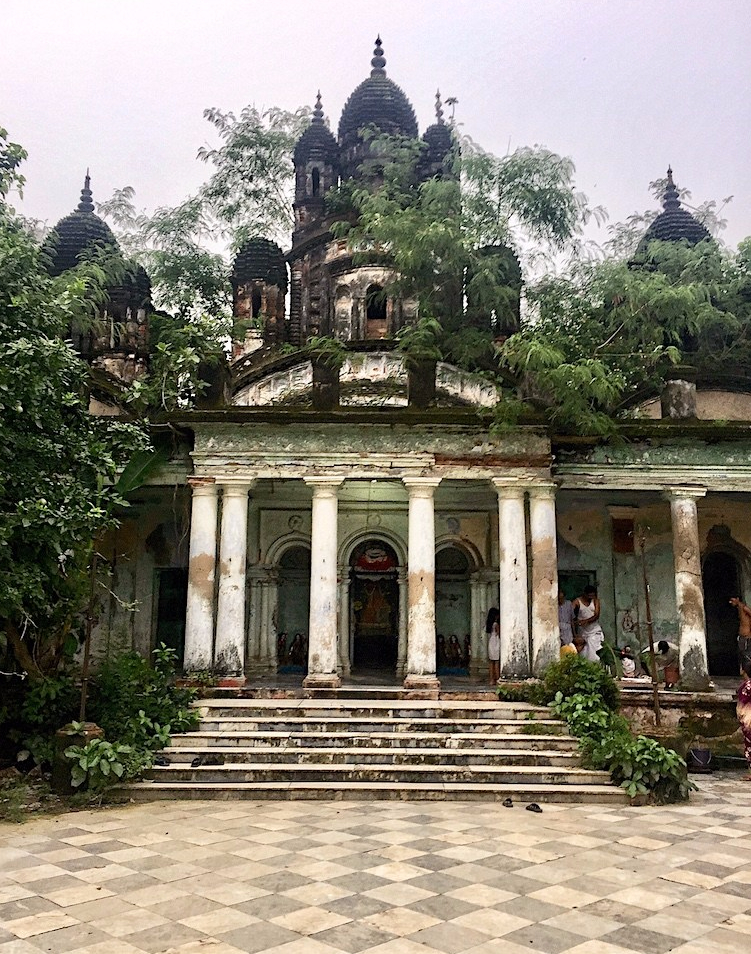
Choto Rashbari
There are also three aatchala Shiva temples just outside the temple complex by the side of Adi Ganga, which one time served as a major pilgrim route. Those three are meant for worship by the general public. The temples are dedicated to Shambhunathji, Biswanathji and Nilkantaeswar. The Shiva temple of Nilkanteswar perished in Adi Ganga more than eighty years ago. There is also a ghat but now in bad shape. The plasters have peeled. Each Shiva temple has got a separate name. To name them from the north eastern side are Bhuvaneswar, Ramchandraeswar, Kailashnath, Bhutnath, Sareswar, Gobindachandraeswar, Nakuleswar, Kamalakanteswar, Bholanath, Taraknath, Ratneswar and Gopeswar. Each aatchala temple on either side houses a Shiva lingam and there is a small room by the side of each temple mainly used to keep the naibidya. There is a total of 15 Shiva lingams – all made of touchstone; twelve inside the temple complex and three outside by the side of Adi Ganga.
Old Ghat by the side of Adi Ganga Shiva Linga
A rasmancha made of Mehagani wood can still be seen on the left hand corner of the temple complex. It had beautiful designs and contains stories of Krishna Lila. The rasmancha was last used seven years ago according to the head priest of the temple. During the Rash festival of Baladev in the Bengali month of Chaitra (March – April), the idol was placed on the mancha for three days.
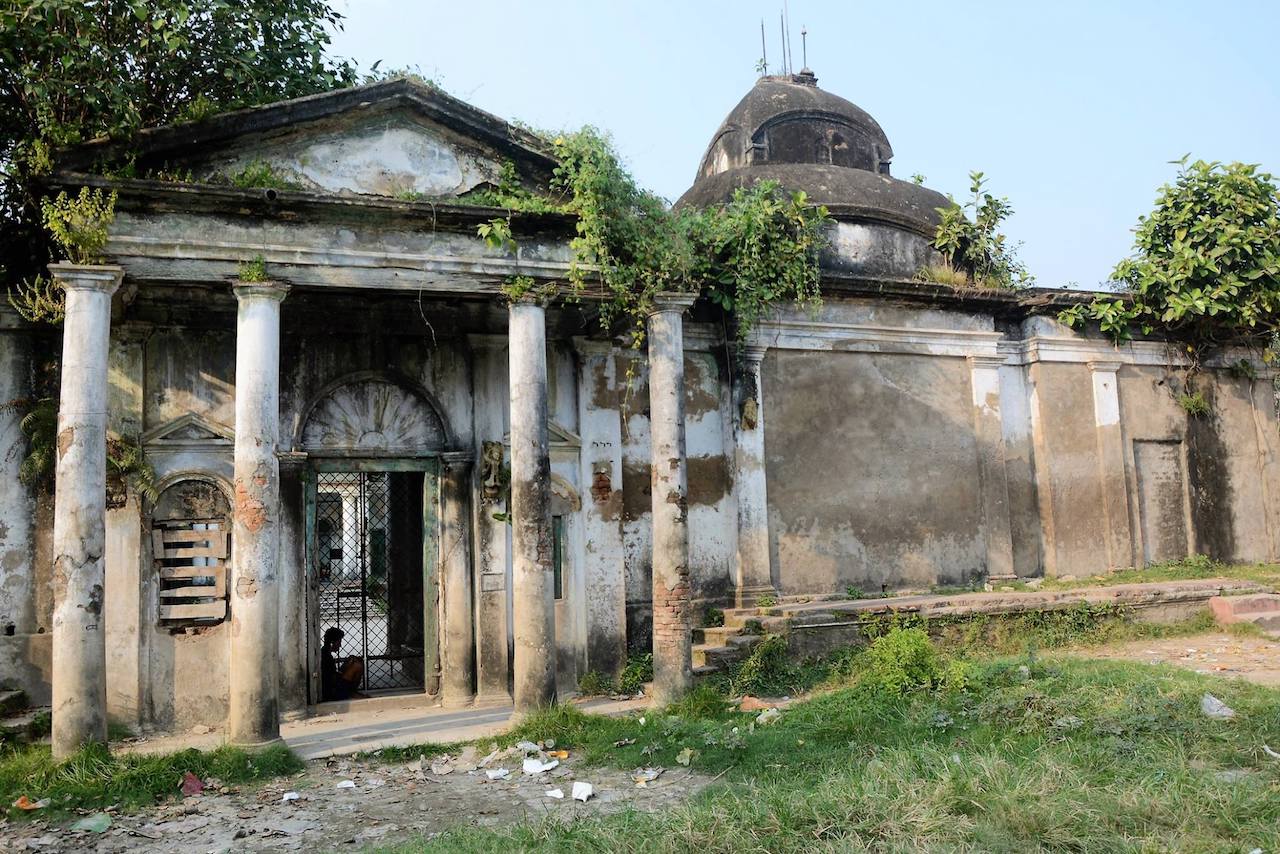
Choto Rasbari from outside.
Two cast iron stand are on either side of the main temple previously used to hang oil lamps and later hazak lamps. Now with the coming of electricity there are in disuse.
Rasmancha Cast Iron stand used to oil lamp.
There are three plaques – two made of marble on either side of the main entrance and another made of touchstone just inside the temple written in old Bengali language. It says that two persons set up this temple – Pyarilal Das and Monimohan Das. The construction started on 27th Phalgun, 1252 in the Bengali calender and completed on 31st Chaitra, 1253. The same dates according to Gregorian calendar is March 1846 and April 1847. It can be clearly seen that the construction period was just one year. It also says about the do’s and don’t’s of the temple. Footwear must be left outside and the temple should not be entered on elephant, horseback and palanquin.
Stone plaques.
The main festival here is Rash (Baladever Rash) and it takes place in the Bengali month of Chaitra on a full moon day, usually held in the month of March or April every year. It is a four-day festival in which the idol is first coloured in Balaram besh (white colour); on the second day Rakhal besh (black colour); on the third day Gouranga besh (saffron colour) and on the last day Bhanga Rash (the end of the festival). Earlier a fair was held in the open ground where circus, puppet dance and similar activities were held. Among the dance (pala) the popular were Dhruba, Prahlad, Hiranna Kusi Badh, Abhimunnya and others. The last time the fair was held in the year 2001. The other festivals which are celebrated here are Phul Dol, Snanyatra, Rathyatra, Janmastami and Jhulanyatra. During those days there was also a nahabatkhana. Earlier during the inaugaration of this temple there was a big chariot (Rath) about 30-40 feet in height. Later with the introduction of Sealdah-Budge Budge railway line and the railway bridge over Adi Ganga, there were plans and proposals to reduce the size of the chariot. Accordingly a beautiful wooden chariot with rare pictures of Kalighat paintings on cloth and pasted on the chariot was made by some Santra of Howrah district about a century ago. The last time it was used was about ten years ago.

Shyamsundarji in Balram besh (Day:1).
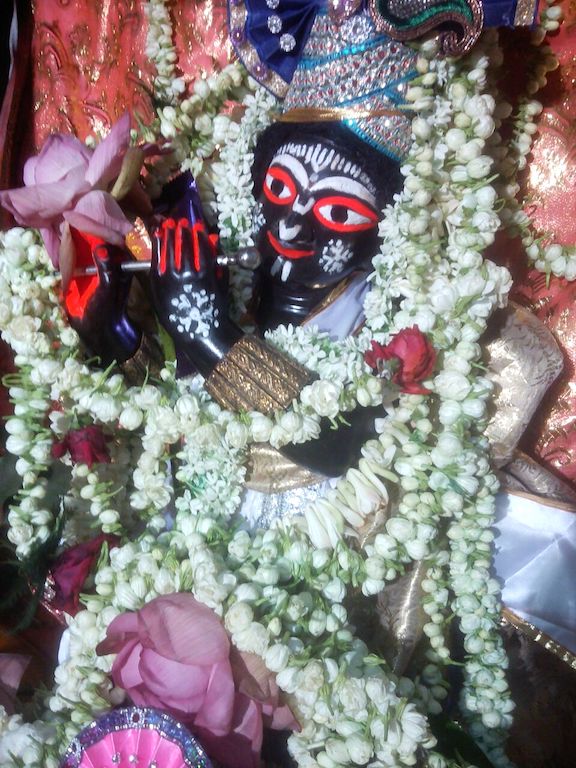
Shyamsundarji in Rakhal besh (Day:2).
Picture Courtesy: Sri Sudip Chakraborty.
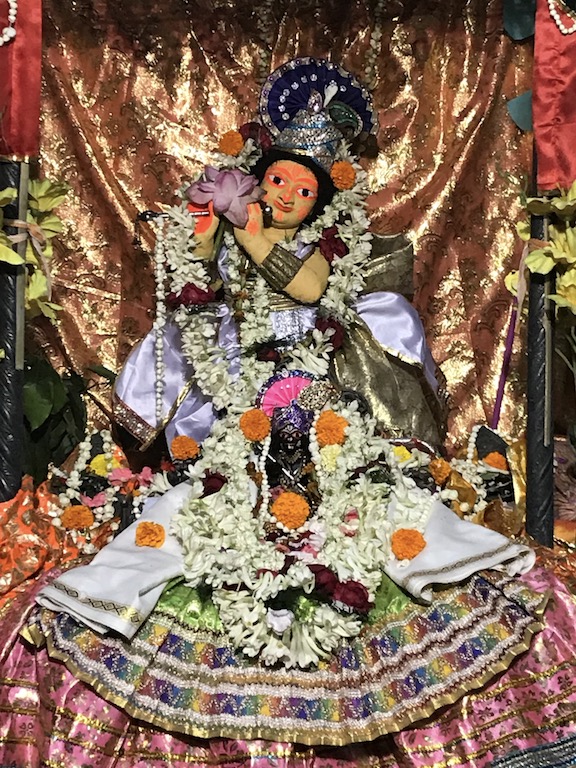
Shyamsundarji in Gourangabesh (Day:3).
I am really indebted to Sri Rajatava Mondal, Sri Pankaj Chakraborty, Sri Sudip Chakraborty and Sri Tapan Kumar Mondal who helped me in writing this blog and also Sri Deepanjan Ghosh for some information.
Date of posting: 3rd April, 2018.

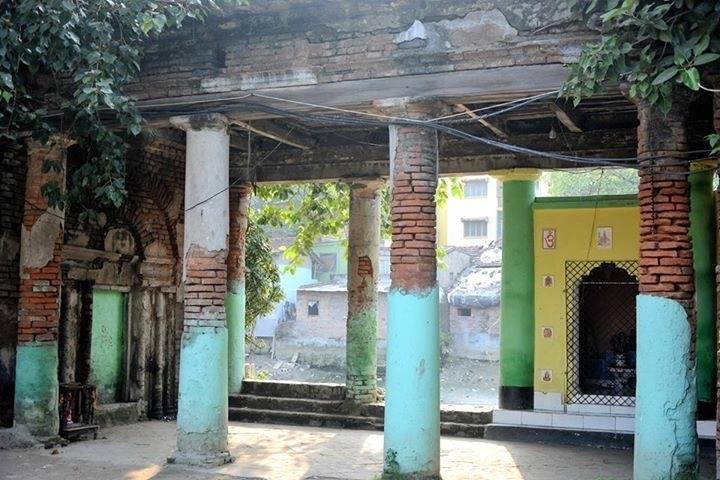
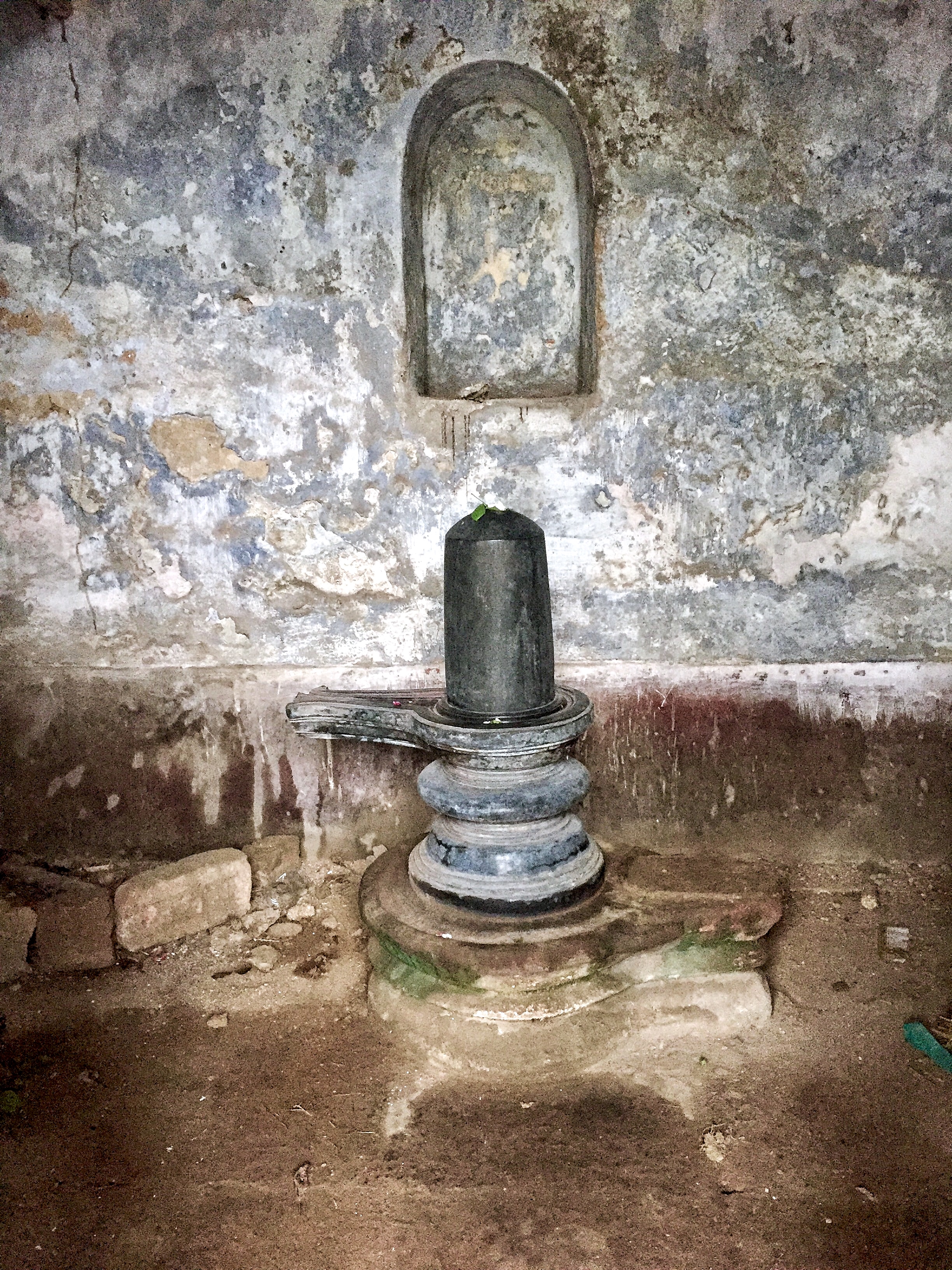
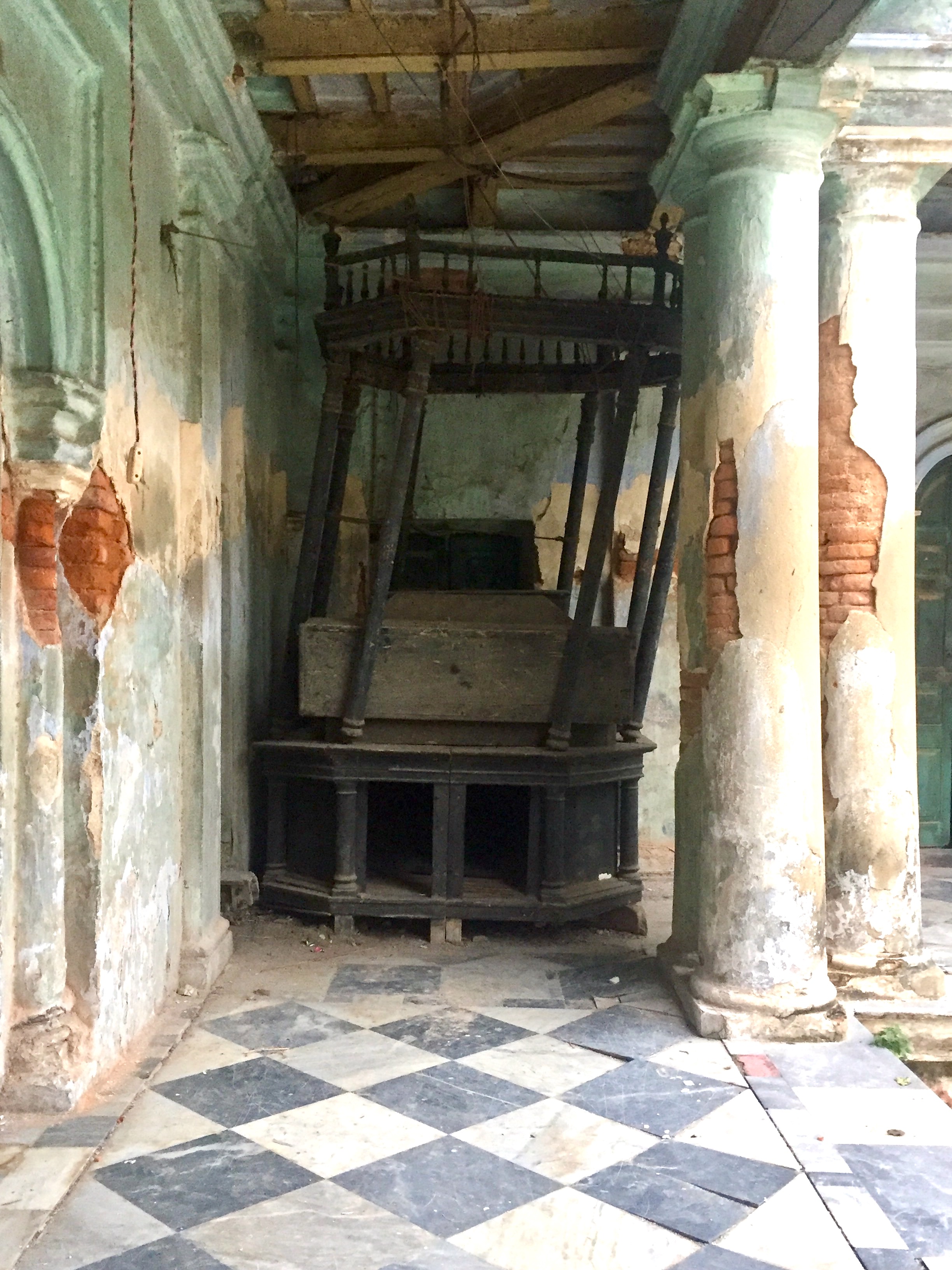
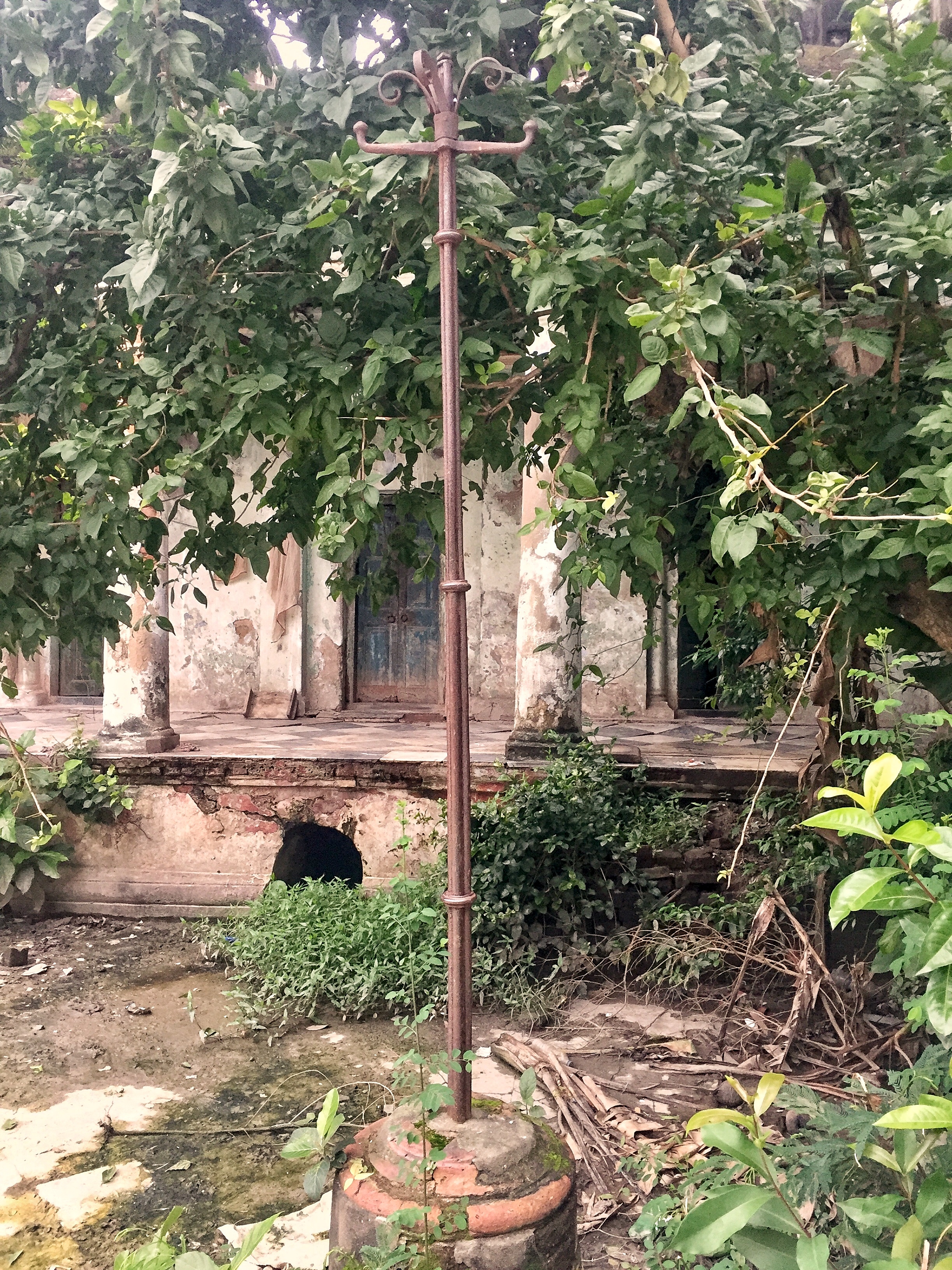
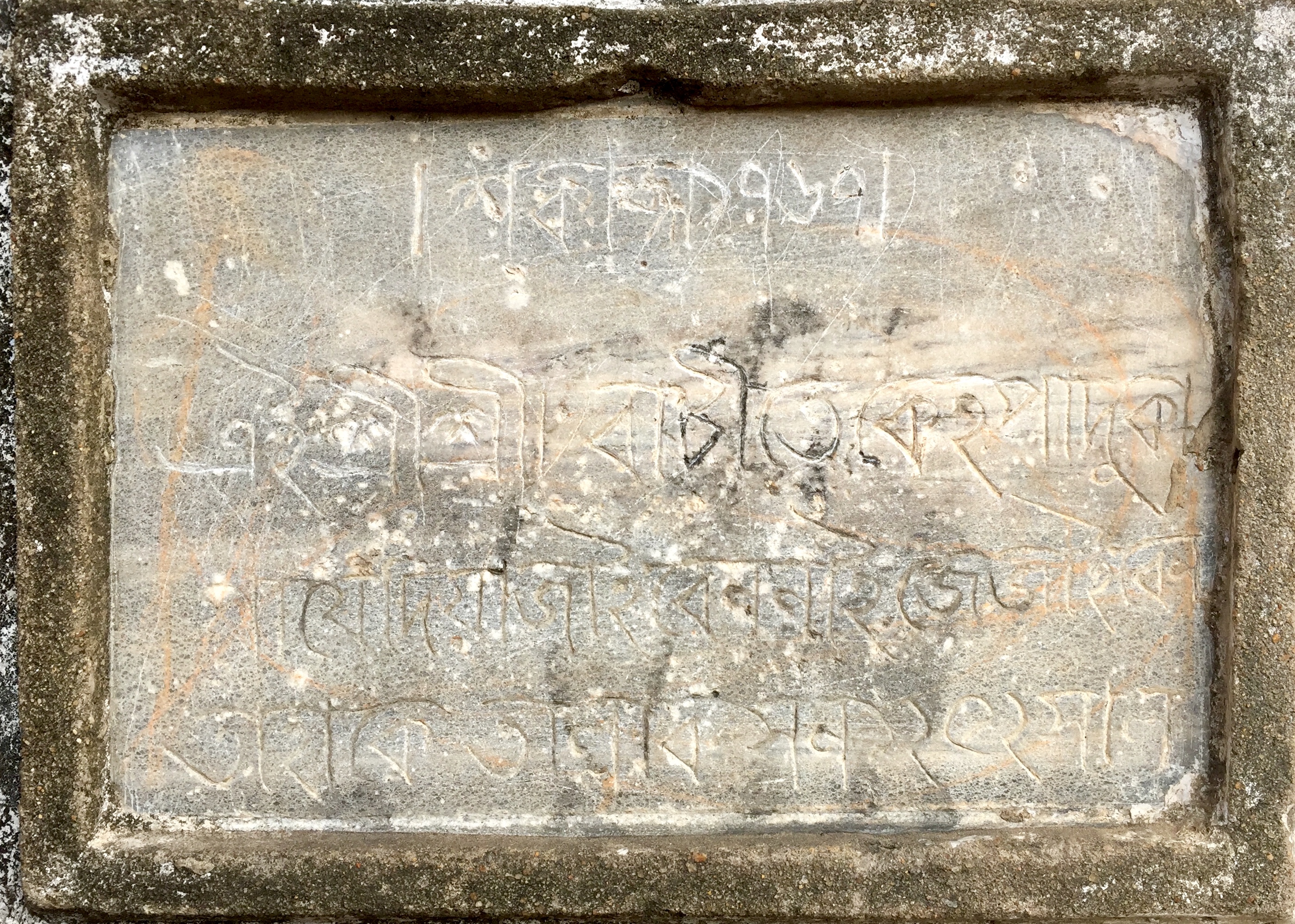
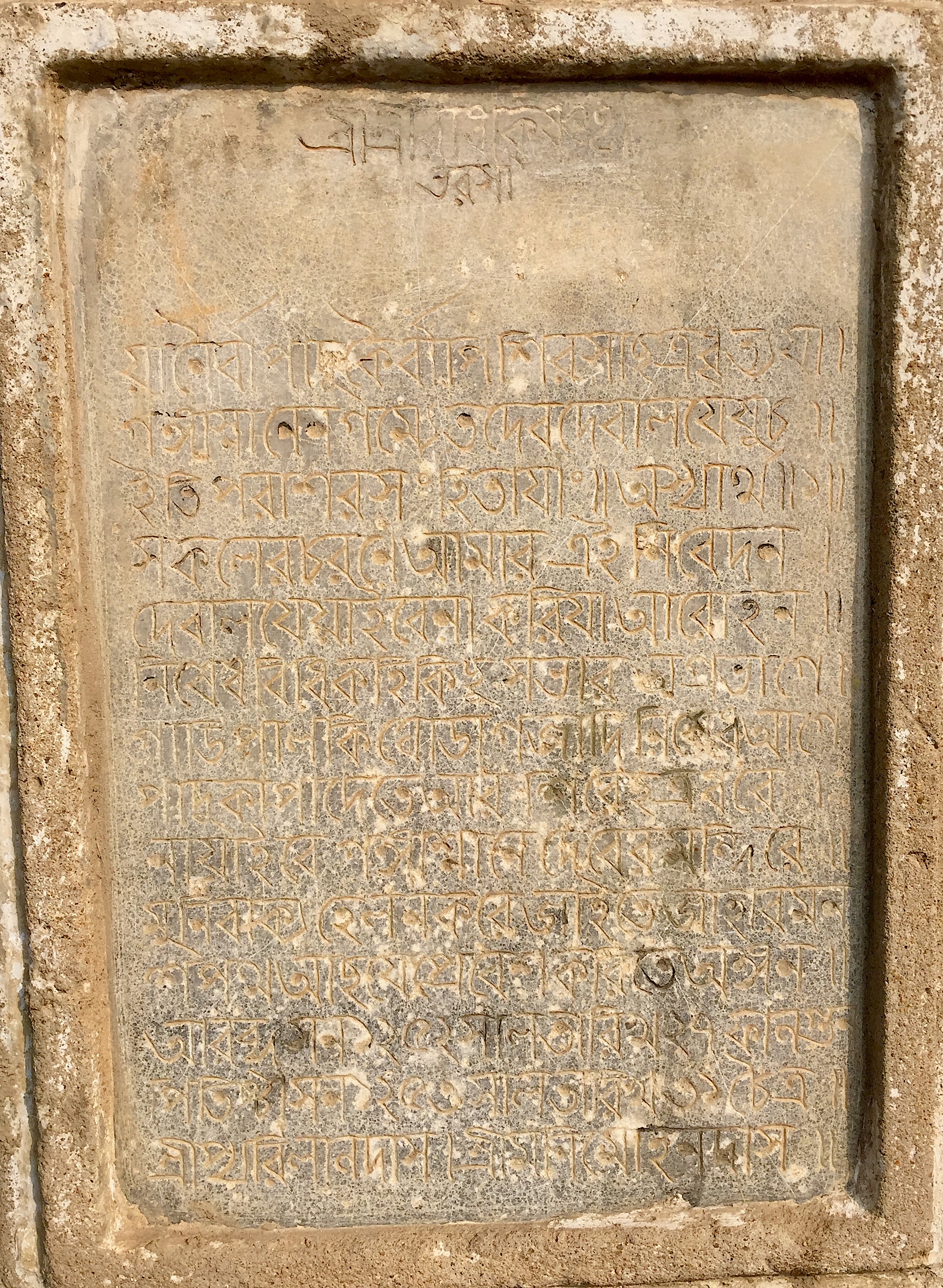
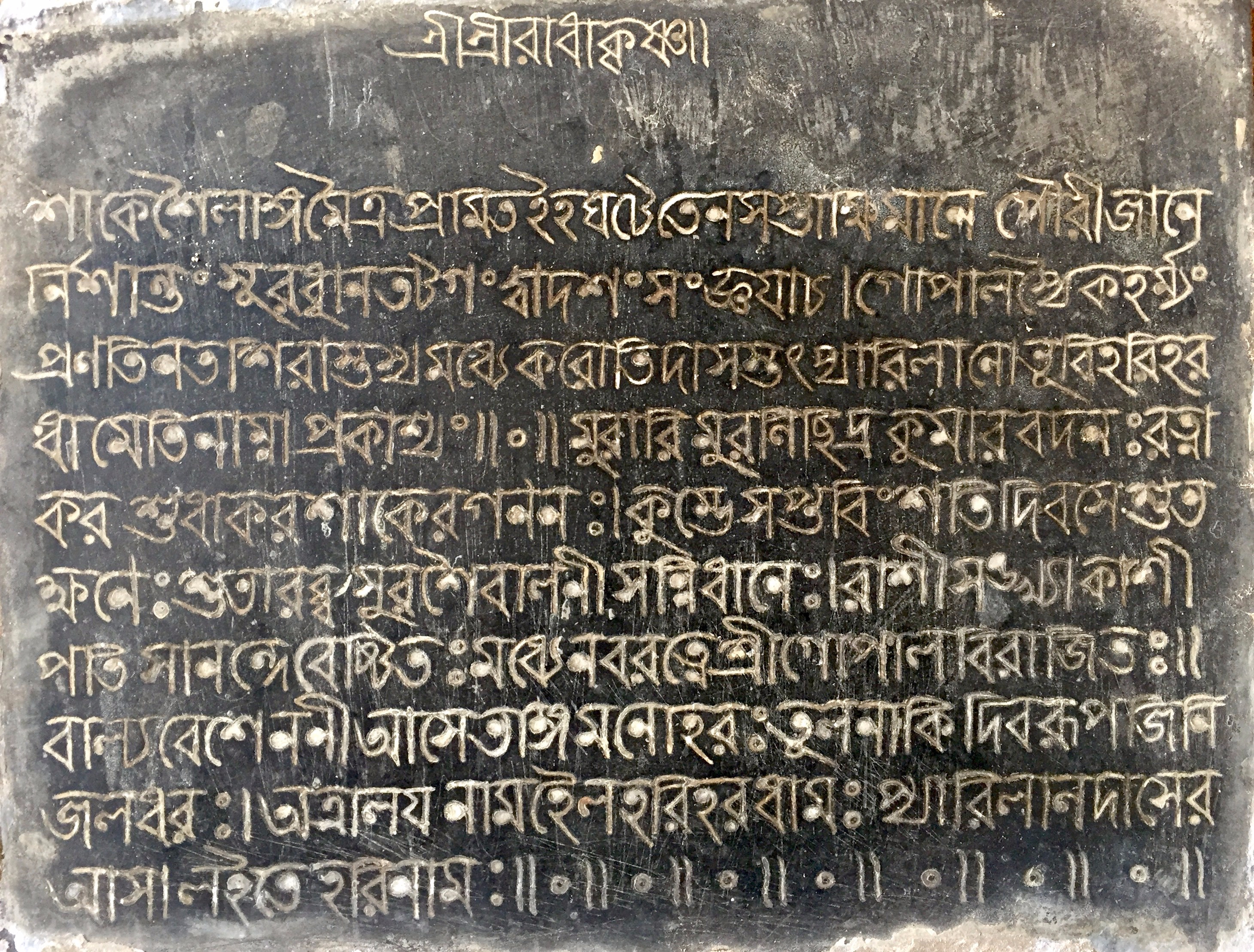
না জানা অনেক তথ্য জানতে পেরে খুব ভাল লাগল । গেছলাম অনেক দিন আগে আমার এক পরিচিতের মেয়ের অন্নপ্রাশন উপলক্ষে কিন্তু এত কিছু দেখার সৌভাগ্য হয়নি ।
LikeLike
Thoroughly researched and detailed blog…made fascinating reading! Loved the pictures of Shyasundarji in his changing colours the best
LikeLike
Thank you for reading my blog.
LikeLike
Very informative blog…beautifully written 👌
LikeLike
মন ভরে গেল । আর অনেক তথ্য জানলাম । ধন্যবাদ ।
LikeLiked by 1 person
খুব ভালো লাগলো
LikeLike